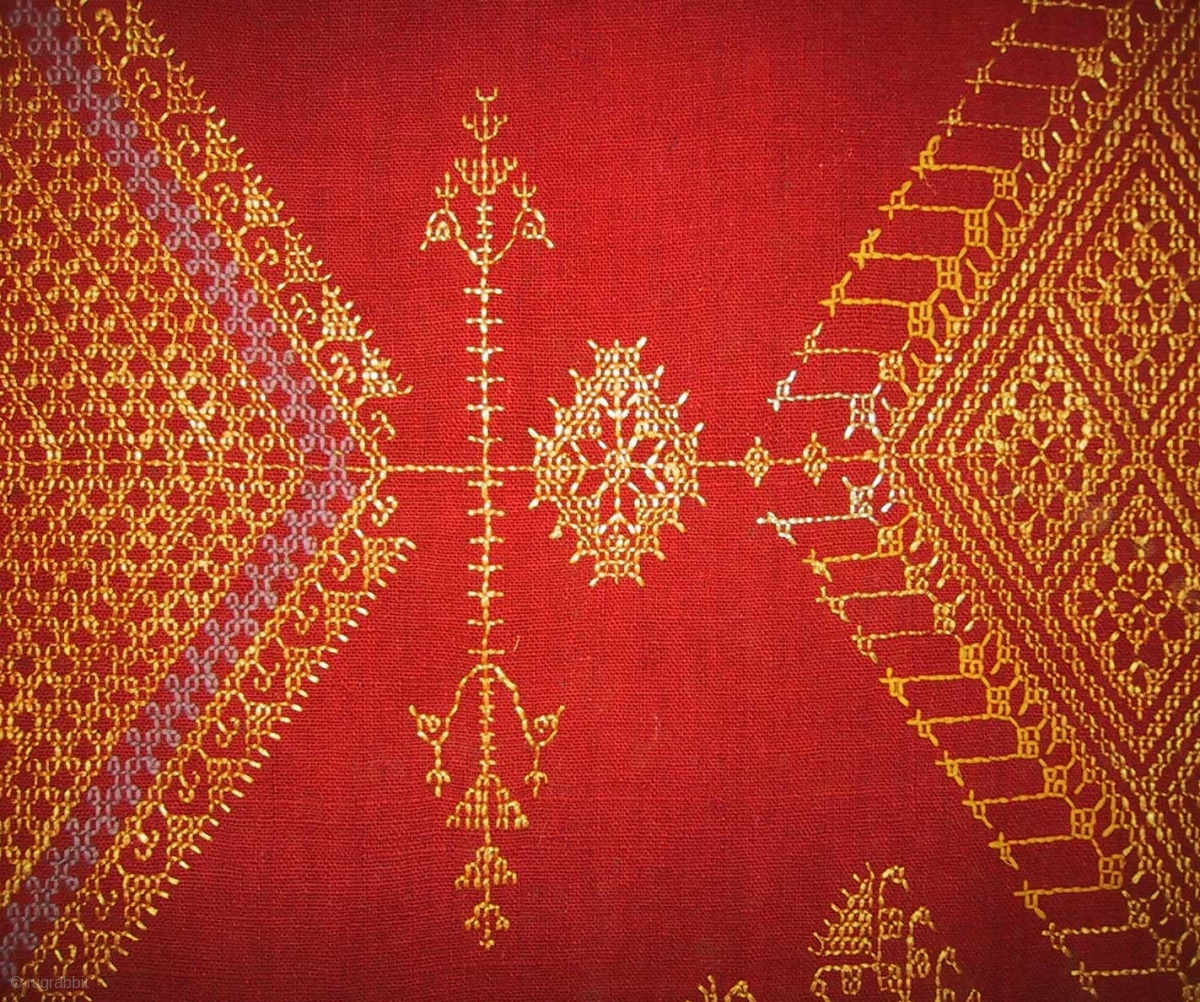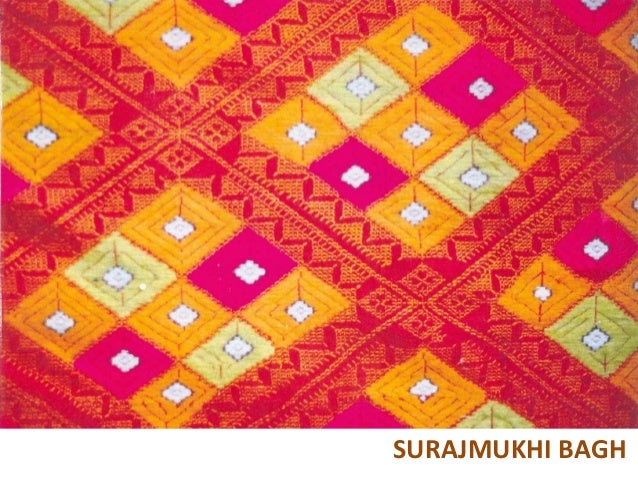Phulkari can be found in different types. Let me now introduce to the world of phulkari.
C. Saloo: It was an ordinary plain red colored shawl of khaddar for daily use in the house, embroidered with motifs of animals, birds, jewelry or human figures.

E. Bawan Bagh: Bawan means fifty-two in Punjabi. In this kind of bagh, the base cloth was divided into fifty-two boxes with embroidery. Each of these boxes was embroidered with a different design made with bright colors. Professionals show their skill and patience with an embroidered Bawan Bagh. It shows the versatile talent and creativity of women

There are many types of phulkari depending upon the motifs, specific
characteristics, color of base fabrics and thread. The different types are described below:
A. Thirma: If the Phulkari was embroidered on a white
colored base cloth, it was called “Thirma”. It was a symbol of
purity. Older women and widows wore it. Bright colors were used on this type of
phulkari and the white base color looked like the outline of the pattern.


B. Chope and Suber: These were
wedding Phulkaris embroidered by the maternal grandmother (Nani) when her
granddaughter was born. They would be a gift for her wedding. The chope was
made to wrap the bride after her last bath before her marriage. The bride wore suber at a particular stage of marriage ceremony known as
“phera”. These were slightly larger than
other types of Phulkari. They were a symbol of love, care, passion and
happiness, were embroidered with red and orange color with bright golden yellow
colored thread. The Chope was also used to cover the bride’s dowry.
.
.

C. Saloo: It was an ordinary plain red colored shawl of khaddar for daily use in the house, embroidered with motifs of animals, birds, jewelry or human figures.
D. Vari-da-Bagh: This kind of Bagh was a gift to the bride by
the mother-in-law when she entered their house, her new home after her
marriage. It was always made on an orange and red colored khaddar with a single
golden and orange colored pat. Vari means the clothes and jewelry
presented to the bride by her groom’s family. This kind of Bagh was given to
the girl before marriage by her mother-in-law, the love showered on her by her groom’s
family

E. Bawan Bagh: Bawan means fifty-two in Punjabi. In this kind of bagh, the base cloth was divided into fifty-two boxes with embroidery. Each of these boxes was embroidered with a different design made with bright colors. Professionals show their skill and patience with an embroidered Bawan Bagh. It shows the versatile talent and creativity of women

F. Darshan Dwar or Darwaza:
Darashan Dwar literally means ‘a gate from where one can see the
god’. A person embroidered this kind of
Bagh for presenting oneself at a religious place to thank god after a wish has
been fulfilled. It was always embroidered on a red colored base cloth.
Human figures, plants, animals, birds and flower motifs were commonly used for
this Phulkari


G. Sainchi phulkari: Sainchi
literally means ‘figuring a design’. In this Phulkari, motifs were represented
from the rural life of Punjab with embroidery. Sainchi was the specialty of the
Malwa religion and of the Bhatinda and Faridkot districts of Punjab. It
was the only Phulkari in which designs were traced with black ink before
starting the embroidery. Human figures, animals and birds were used as
motifs for the Sainchi Phulkari


H. Til Patra: Til Patra literally
means ‘a sprinkling of sesame seeds’. This kind of embroidery was done with
small dots on an overall field. These were embroidered for everyday use and
presented to domestic servants and laborers as a gift at a marriage or other
auspicious occasions.
I. Nilak: The Nilak Phulkari was made with a black
and navy blue base cloth of khaddar, and yellow and crimson-red silk thread,
with attractive floral patterns. This type of Phulkari was also embroidered for
daily use.
J. Shishedar Phulkari: As the name implies, pieces of mirror pieces
of mirror were stitched onto the Phulkari. It was done in a red or a chocolate
brown background. It was made primarily in the southeast parts of Punjab, now
in the state of Haryana (Hitkari 1980).
K. Suraj Mukhi: Suraj Mukhi means ‘Sun Flower’. In this
Phulkari, the field was embroidered with large sized boxes that were divided
into nine small parts embroidered with different colors. In the centre of every
small box, another small box was embroidered with a white thread and a black or
red colored outline. It looked like a geometrical pattern.


No comments:
Post a Comment